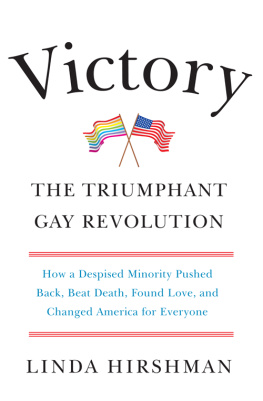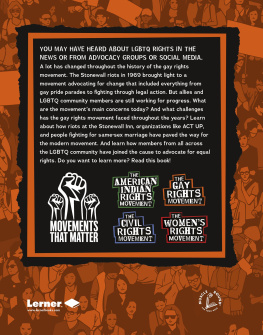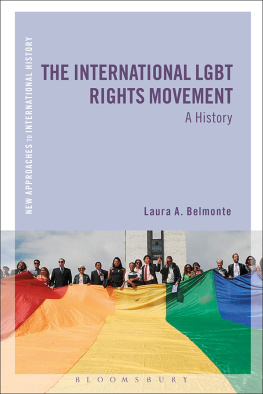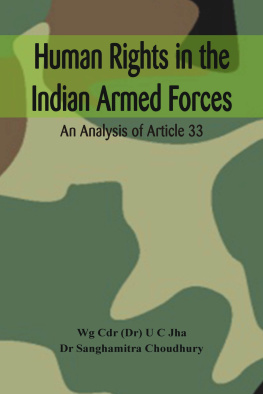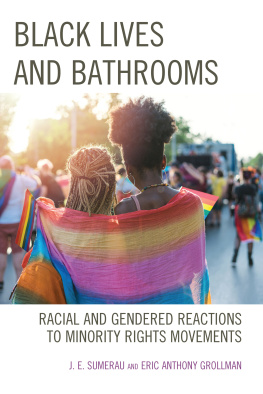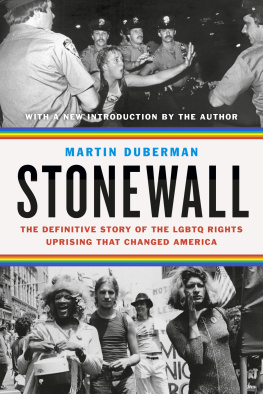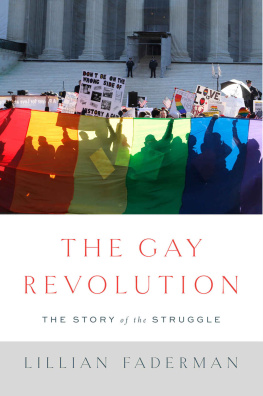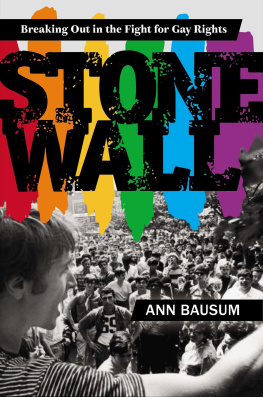Victory
The Triumphant Gay Revolution
Linda Hirshman

www.harpercollins.com
A s I turned to leave his San Francisco apartment after our interview, Arthur Evans (19432011), longtime gay activist, philosopher, and bongo-drumming Faerie, opened his arms and pulled me into a big hug. Still holding me, he explained the sudden onslaught of affection for a heterosexual woman hed just met a few hours before. You can do this, Linda, he said. Tell them our story.
Contents
How an Army of Good Gays Won the West
A t the height of the real estate boom in the 2000s, Robert M. Robby Browne, 2007 Corcoran Real Estate National Sales Person of the Year, put on his womans bathing suit and silver heels and walked out onto the Club Exit stage. A thousand screaming, cheering, photo-snapping real estate brokers roared their approval. The openly gay Browne, six feet tall and nearly two hundred pounds, danced a sweetly amateurish version of the Village Peoples gay anthem, YMCA, as ten half naked male Broadway dancers backed him up.
Is there any question of who the star is? Browne asks proudly, watching the video today. For most real estate brokers, a third year as Corcorans top producer would have been stardom enough, but when Corcoran CEO Pam Liebman began planning the 2007 event, Browne thought he wouldnt bother to attend. Hed had enough top-earner, $100-million-club years. He was turning sixty, and he was thinking about his life as a whole. Finally he said he would show up, but only if he could accept the award in drag. Brownes beloved gay older brother, Roscoe Willett Browne, died of AIDS in 1985. Hed never forget the day when President George H. W. Bush said that dying of AIDS wasnt as important as losing your job. George H. W. Bush did not acknowledge the sacrifice of my brother and our love. My brother. Hes in his eighties and he still has his brothers and I dont have any brothers, says Browne. And my brother was a Yalie and he was in Vietnam; Bush, how could he be more your person? WE EXIST , says Browne, looking at the video of his awards ceremony. This show says WE EXIST .
i
Exist? You cant pick up a paper without seeing evidence that gay people exist and are compelling American society to acknowledge them. The federal government protects them from homophobic violence and twenty-one states have laws against discrimination; 141 cities across the country constitute enclaves of equal treatment. A federal nondiscrimination bill gains more support in Congress with each passing year. Poll numbers show Americans overwhelmingly support protection for gays and lesbians against hate crimes and equality in health benefits, housing, and jobs. In July 2010, a federal judge struck down the federal law, the Defense of Marriage Act, that excluded gays from the federal benefits for which married people were eligible and that allowed the states to refuse to recognize the marriages if they pleased. In August, another federal judge invalidated the amendment to the California constitution, added by Proposition 8, that limited marriage to a man and a woman. September had hardly dawned when a third federal judge found the policy requiring gay soldiers to hide their sexual orientation, dont ask/dont tell, unconstitutional as well. The United States Congress repealed the law prohibiting out gays and lesbians from serving in the armed forces. Right after the Fourth of July in 2011, the federal courts in California ordered the United States military to stop screwing around getting ready and just cease enforcing it at once.
Gay playwright Edward Albees play about the unbounded nature of love objects, The Goat, or Who Is Sylvia? , won the Tony Award for best play in 2002; the heroic biopic about San Francisco gay activist Harvey Milk, Milk , won two Oscars in 2009. So many people in show business have come out as gay that some gay media are now pooh-poohing their confessions as cheap shots meant to bolster their flagging careers.
Two of the most famous heterosexual lawyers in America, David Boies and Ted Olson, brought the suit against the California marriage ban in 2009. Win or lose, Boies and Olsons case has already achieved the crucial social goal of making same-sex marriage a legitimate claim. On the eve of the closing argument in the case in 2010, a New York Times editorial called same-sex marriage A Basic Civil Right. In 2011 the poll numbers in favor of same-sex marriage crossed 50 percent. Regardless of intermittent setbacks, gay people like Robby Browne have succeeded in forcing society to acknowledge that they existas humans with a right to life and as American citizens with a claim to equality under the United States Constitution. Most of all, they have staked their claim to be treated, without lying or hiding, as moral persons, whose lives, loves, and ambitions have value and cannot be discounted.
The year 2009 saw the fortieth anniversary of the uprising in a New York gay bar called Stonewall. In 1969, homosexuals, people who wanted to have sex with members of their own sex, were considered sinful by the church, their sexual practices were criminal in forty-nine states, the psychiatrists said they were crazy, and the State Department held that they were subversive. Forty-two years later, almost to the day, Andrew Cuomo, the governor of the state of New York, signed the law that enabled them to marry in New York. The Empire State Building was lit up in the rainbow colors of the symbolic gay flag.
ii
How did this tiny minority of despised and marginalized people do it?
They did it in America, what we philosophers call a liberal (small L ) state. Americas roots go back to the beginning of modern Western political thought in the seventeenth century, when the philosopher Thomas Hobbes speculated that people create their governments; states are not handed down from God to Adam to the king. During the century and a half after Hobbes wrote, the English and their American colonists launched a variety of social movementsthe English Revolution and the American Revolution among themthat pushed and pulled on the deal between people and government until they produced the basic outline of the modern western state, the liberal state. The liberal state makes three promises to its citizens. First, security: the state will protect its citizens from one another and not hurt them worse than the people it is protecting them from. Second, liberty: citizens have certain rights as human beings that even the state cannot interfere with. And finally, self-governance: for those aspects of life the state can control, citizens must decide for themselves on equal terms what they want the state to do. Its a good deal. No wonder so many people want in.
By the late twentieth century, Americans had already undertaken two great social movements for inclusion in the liberal state, the racial civil rights movement and the feminist movement. Since people arent all that easy to organize, theorists have often speculated about how they did it. Their conclusions are that movements arise only when people come to see that their problems are political, not natural or personal, what theorists call oppositional consciousness. This aha! moment in the civil rights movement dates back at least to W. E. B. Du Bois in 1903, when he observed that the problem of the Twentieth Century is the problem of the color-line. In addition, movements need access to resources, as when the NAACP started getting hold of real money and the movement gained astute leaders, such as Martin Luther King Jr.
Students of the racial civil rights movement made the assumption that before people engage in new movements they do a rational cost-benefit analysis, weighing the benefits of political action against the cost. When people created social movements against all odds and acted against their own individual self-interest on behalf of the group, theorists had to rethink what really drives people to take action. As the racial civil rights movement gave way to other movementsthe feminist, and, finally, the gay-liberation movementsociologists produced more theories to explain the new movements; indeed, the later thinking is often called new social-movement theory. In the newer thinking, theorists speculated that people draw their sense of who they are from the groups or social networks they are already in. From those starting places, they conceive a positive vision of themselves and then a desire to change the way the larger society perceives them all. New social-movement theorists came to the realization that sometimes group identity is so strong that people act on behalf of the group whether it benefits them individually or not.

